Mumbai, formerly Bombay, has most ancient roots. Mumbai was formed out of seven islands, of which Colaba was the southernmost. Archeological digs show evidence of occupation since the stone ages. Probably this area was first occupied by the people who came from East Africa about 50,000 years ago. The name, “Bombay,” came from the Portuguese, and means ‘good bay.’
A Quick History
This material is taken from a number of sources, including wikipedia, mumbaionline, and Mumbai on the Net.
Mumbai has a long history of contact and trade between different cultures.
Mumbai has been a sea trading center for at least 3000 years, since the Aryan period. Mumbai was part of Ashoka’s empire when it ruled most of India, 269 BC to 232 BC.
After Ashoka’s death, these islands passed into the hands of various Hindu rulers until 1343. In that year, the Mohammedans of Gujarat took possession and these Kings ruled for the next two centuries. The only thing left of their dominion over these islands that remains today is the mosque at Mahim. The Portuguese came in 1498. In 1534 the Portuguese, who already possessed many important trading centers on the western coast, such as Panjim (in present-day Goa), Daman, and Diu, took Bombay by force of arms from the Mohammedans.
The British took over in 1661 when Bombay (as it was called then) was given to English King Charles II in dowry on his marriage to Portuguese Princess Catherine of Braganza in 1662. In 1668 King Charles leased it to the British East India Company. The price? An annual sum of £10 per annum. The British built forts, huge custom houses and other buildings during this period, but the real development of the city began around 1857, the year of Sepoy Mutiny. Politically, Bombay came under the direct rule of the British, and this period marked the tremendous growth of Bombay. In 1858 by a special proclamation, the administration of all of India was taken over by the queen of England, Queen Victoria. The seven islands were joined into one by a land reclamation project in 1862. Soon after, the railway was started, and the first of many cotton mills started production. Bombay later was a center of the Indian Independence movements after Ghandi’s arrival and residence starting in 1915.
Today Mumbai is one of the largest cities in the world, the largest in India, with a population estimated to be over 14 million, and an urban-area population over 20 million. It is one of the industrial centers of India, with about 25% of the total production of India. It is the financial center, with over 70% of the capitol transaction in India. It is the home to India’s biggest film and television center, called “Bollywood,” which produces more movies each year than the US. Mumbai attracts people from all over India and from around the world, people looking for a better life and more opportunity.
Our first two days in Mumbai
We stayed at the hotel “Bentley’s,” well known as the lowest cost hotel in the area that was any good. The hotel is actually in four different buildings, all converted from British colonial era housing. This is in the heart of Colaba. Here is a link to the Google Map of Colaba.
We walked around the area. One monument of note is the Gateway of India, on the East side of the district.
Common here are these ‘silver’ carriages, available for tourists to ride.
Many hundreds of people are gathered in the open area in front of the Gateway. It is a popular spot to visit.
The Gateway to India was started in 1911 and completed in 1924. Its design is a combination of both Hindu and Muslim architectural styles. The arch is in Muslim style while the decorations are in Hindu style. It is made of yellow basalt and reinforced concrete. The stone was locally obtained, and the perforated screens were brought from Gwalior. These are shown below.
Most of the people here are Indians.
A group photo with the Gateway in the background is a popular item.
Beggars and their children are found throughout the plaza.
Looking to the waterfront, this is a harbor for many small boats.
The photo below is of a tour boat. You can take boat tours of the bay and to Elephanta island, where a cave dates from the Buddhist era of Ashoka.
People in their small boats also ply the waters.
Colonial era buildings are on the other side of the plaza.
This does not look like India!
Vendors line the streets near the Gateway. This one sells bubbles!(?)
Peanuts, get your fresh roasted peanuts!
Across the street is the Taj Mahal Palace & Tower hotel, built by Jamsetji Nusserwanji Tata, the founder of the powerful Tata industries companies. Legend has it that JN Tata was taking a foreigner to a dinner at the hotel, but was stopped at the entrance by the doorman. The reason? Only Europeans were allowed in, not Indians. That rebuff was enough to make Jamsetji decide to build a grand hotel in India, the grandest in his chosen city, Bombay.
This hotel is so well known as a place visited by wealthy and famous Indians and Westerners, that it was one of the four locations targeted by the terrorists that attacked Mumbai by sea from Pakistan on 26 November, 2008.
Expensive shops offering highly styled western type apparel and merchandise are nearby.
That evening as Carol and I walked more through the district, we started to see some of the urban altars in the big city. They were all well lighted, and a pleasure to see. And very different from what we see in Tamil Nadu.
Here is a large shrine under an ancient tree. This is probably very old.
There is a Siva lingam, accompanied by Nandi and Hanuman on one side.
Naturally, Lord Ganesh is on the other side.
Below are some more street shrines we saw that night.
This one seems Christian to me, like some Saint.
On the main tourist street in the area, called Colaba Causeway, the street is lined with small vendors’ stalls selling clothes, shoes, jewelry, purses, carvings, and about anything they think Westerners would be interested in. There are so many sellers here, and people walking up and down the street, that it can be hard to move through the crowd. And everywhere you go there will be some vendor trying to get your attention.
Indians shop here, too. Especially ones interested in what they think are ‘Western styles.’
In Tiruvannamalai, where we live, “Bhagavan” has one main meaning, Bhagavan Sri Ramana Maharshi. In Colaba it is a bangle shop. Perhaps the spiritual atmosphere is a bit different?
Here is the entrance of the place we stayed, about two blocks from the main Bentley’s location.
One popular hangout (and one of the main reasons we were here) is the Leopold Cafe & Bar. This was popularized recently by Gregory David Roberts, in his book, Shantaram, which we both found very interesting. We could see one of the main locations of the book, and maybe meet the writer.
Across from the entrance to Leopold’s was a vendor selling these colored glass items, lamps? The light was not right for the perfect photo, so this is the best I have.
Inside were tables, crowded into the room. The room seemed bigger in the book. Here are Carol and her daughter, Amy (the New York city comedienne. Her website is here.).
Leopold’s was the first place attacked by the 26/11 terrorists. Two staff members and six customers were killed here. A few bullet holes remain.
One thing that Leopold’s is famous for is their special ‘pitchers’ of beer. There is a tube of ice in the center to keep it nice and cold. Carol is sitting at the table with her son, Brody (the upcoming artist, see his blog here), and Amy. Carol is doing the honors of pouring the beer. This is a very special task in our family.
After this attack, this group of terrorists went to the Taj Mahal hotel. Six explosions were reported at the Taj hotel. At the Taj Mahal, firefighters rescued 200 hostages from windows using ladders during the first night. The attack there lasted from 26/11 until 29/11.
The main lobby of the Taj is shown below, in Christmas season decoration. There are no signs of any attack.
This is a ritzy place. Rooms and meals at the restaurants here are VERY expensive.
Like many such places, there are some interesting native art pieces here.
Here is one metal sculpture.
This was atop a Christmas decoration.
There was much more to the Mumbai trip. Stand by for further posting.
Tags: bombay, colaba, Leopold Cafe & Bar, leopold's, Mumbai, Taj Mahal Palace & Tower hotel
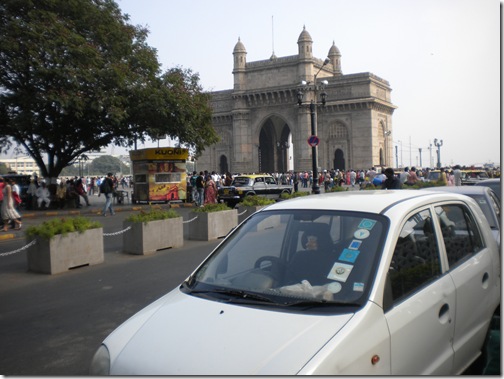
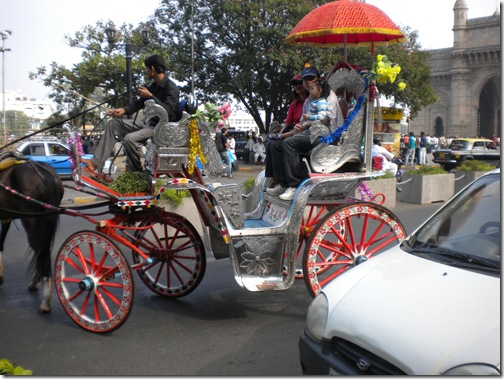
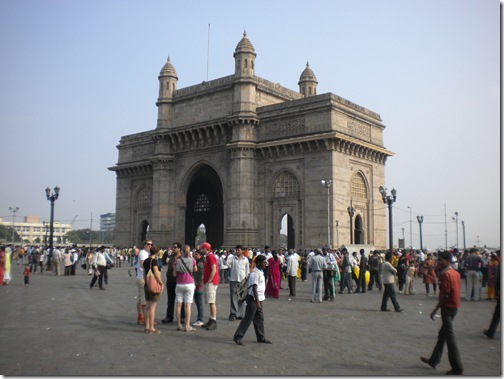
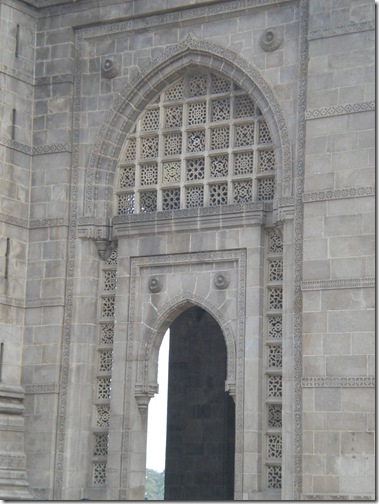
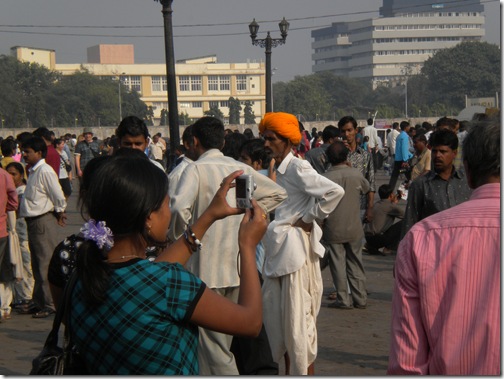
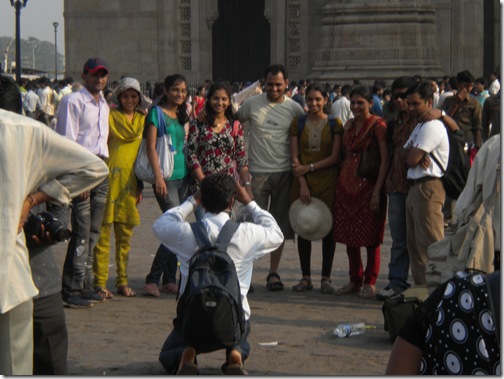
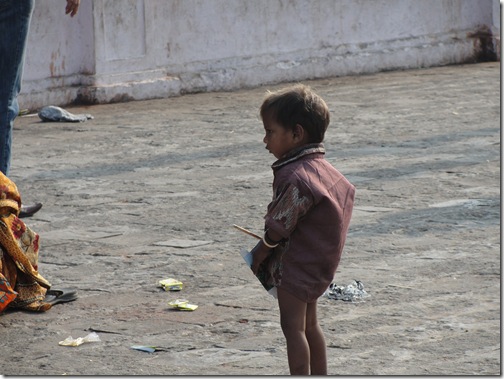
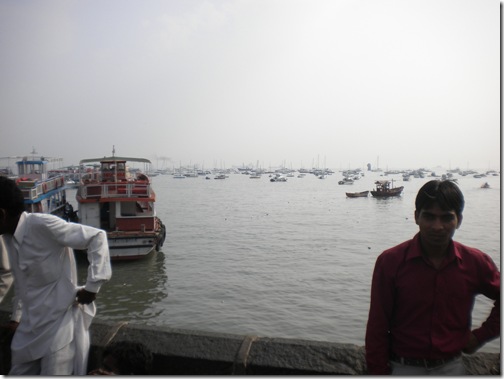


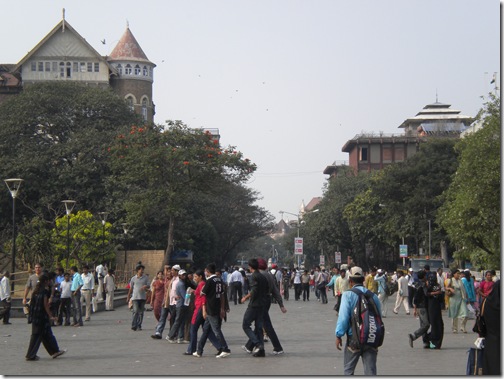
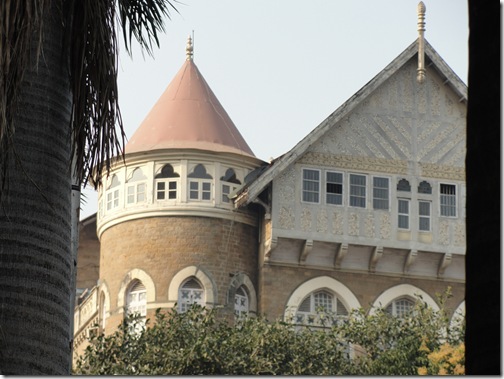
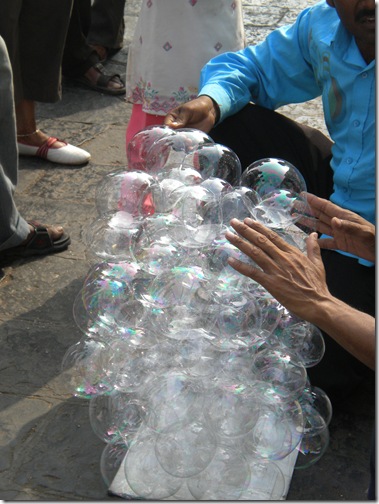
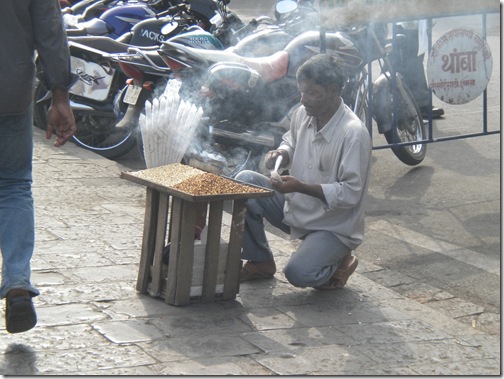
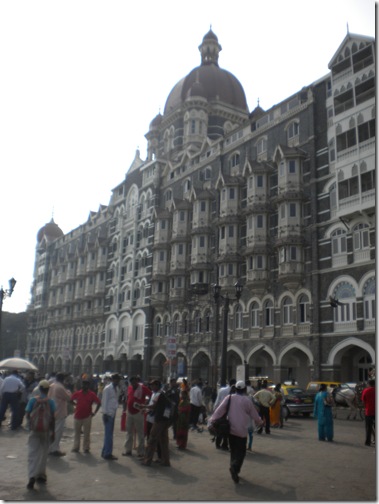
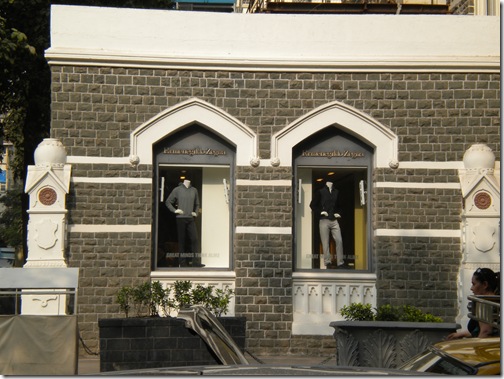
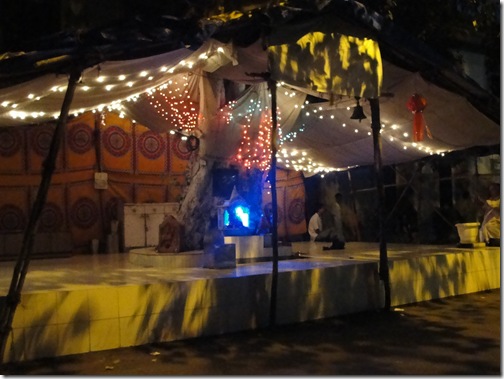
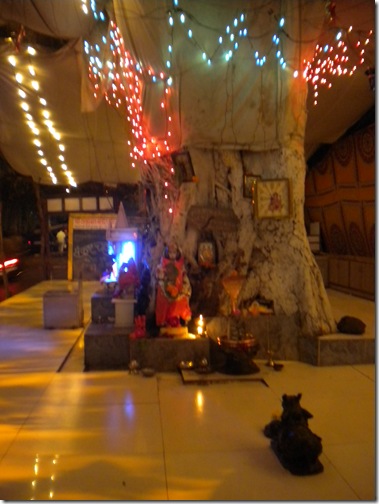
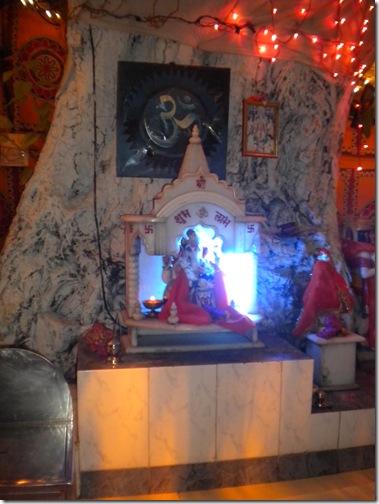
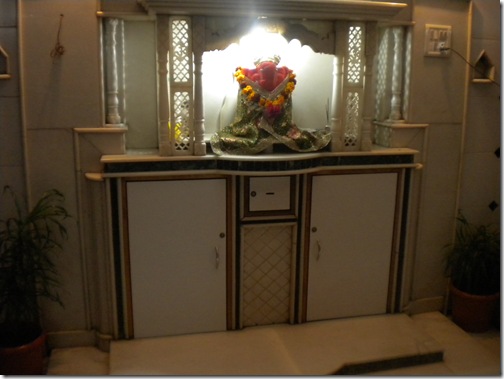
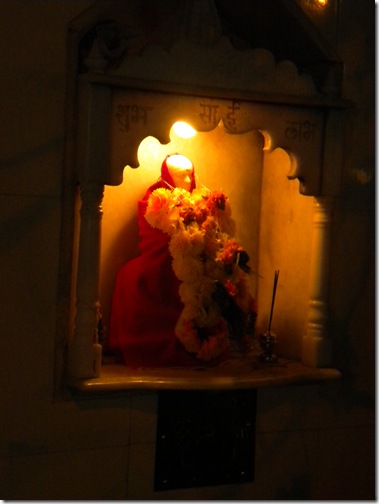
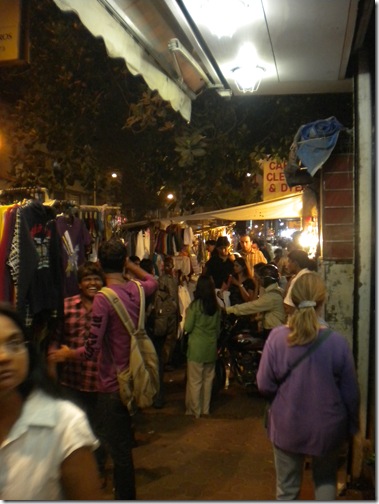
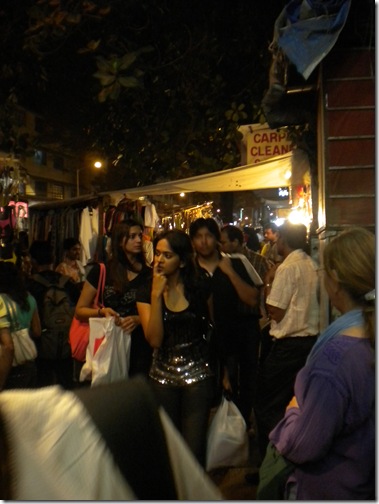
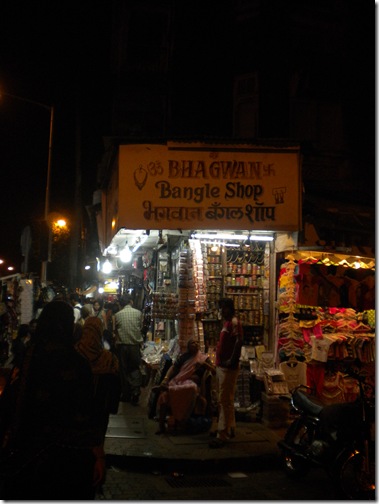
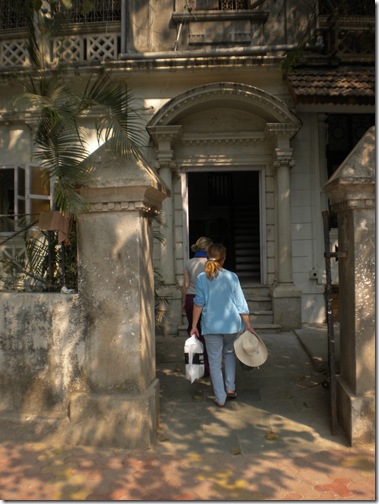
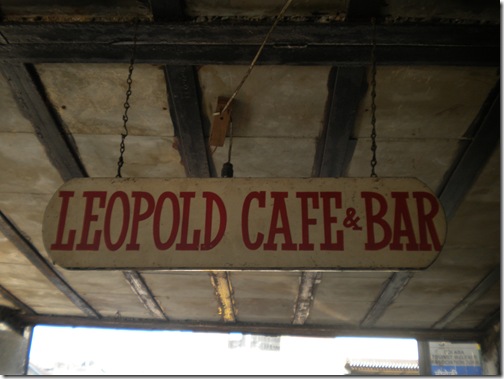
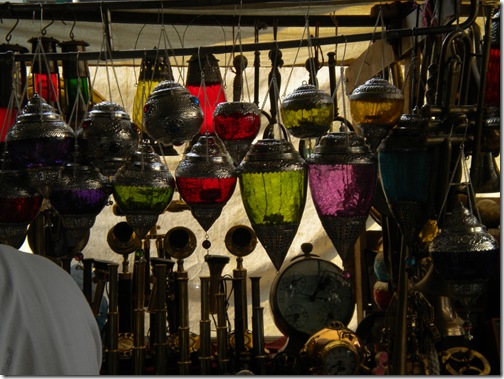
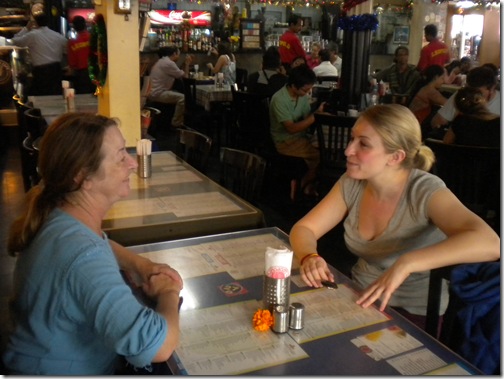
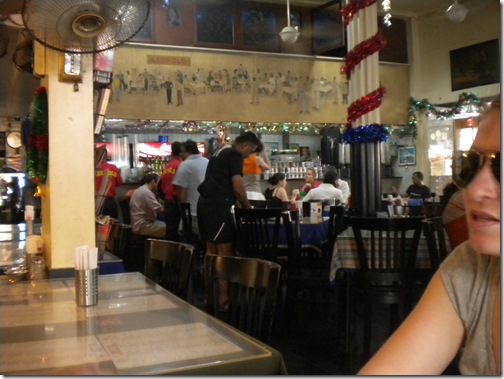
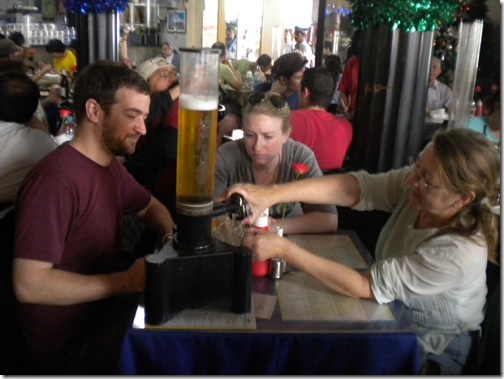
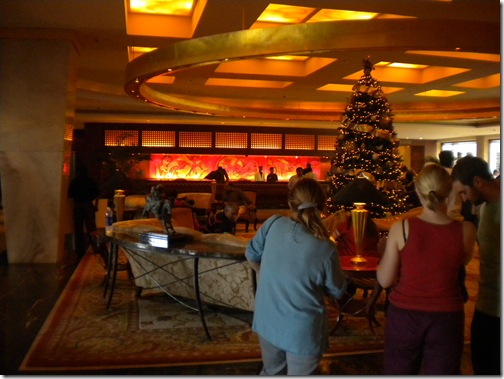
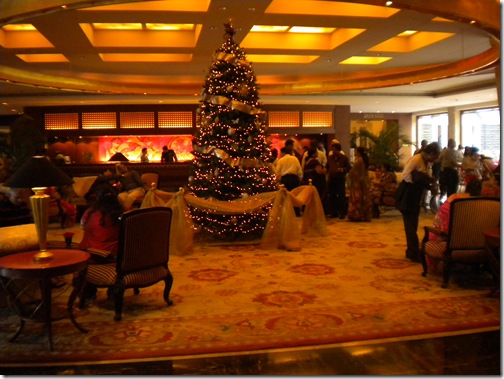
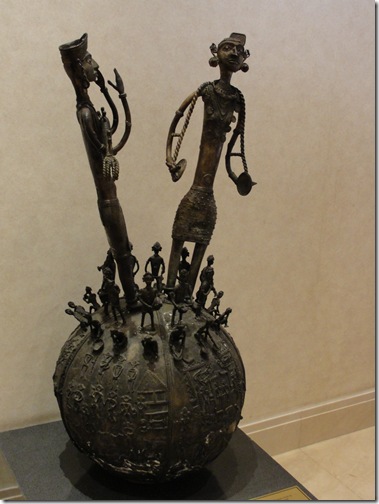
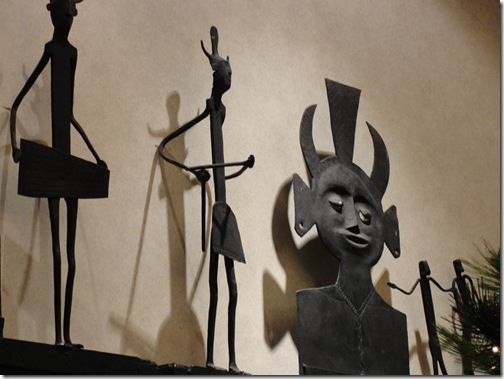
January 21, 2010 at 9:03 am |
[…] The rest is here: In Mumbai's Colaba District « Living in the Embrace of Arunachala […]
January 15, 2010 at 8:43 am |
Looks like you got to roam a lot around Colaba…. the saint is Sai Baba of Shirdi, and you can find small shrines dedicated to him at almost every corner of bombay!!!
January 15, 2010 at 9:18 am
OK, thanks for that. We know of Shridi Sai Baba. He is also held in very high regard in Tiruvannamalai, and has a nice shrine on the pradakshina road around Arunachala.
January 14, 2010 at 5:55 pm |
[…] https://richardarunachala.wordpress.com/2010/01/14/in-mumbais-colaba-district/ […]
January 14, 2010 at 5:52 pm |
Lovely pics!
January 14, 2010 at 5:48 pm |
I like how you included the history 🙂
The buildings show a multicultural origin to the city.
I see the influence of the british – the beer machines (joking hehe). Was there any portuguese influence after all this centuries?